Dear friends,
Even as a small child, the syllables of Indian rhythm have always held an endless fascination for me. The sounds Tha Dhi Thom Nam as they were played on the Mridangam by my father Vidwan Ullur Nagendra Udupa and later by me on the Ghatam were the first language I learnt to communicate with. My fingers often seemed to move of their own accord over the surface of the Ghatam which I held close to my body, and I would lose myself in the never-ending sounds that I seemed to pull out from the surface as well as from the deep hollow of the Ghatam.
For those of you who are not familiar with the Ghatam, I would like to share with you a little about my instrument which has been in existence for several centuries in India, and which when learnt can connect you to the land as no other instrument can.

What is a Ghatam?
In my travels across the world, I have often been approached by people curious about the Ghatam. What does the word ‘Ghatam’ mean? Is it the same as the cooking pot used in several Indian homes? What is it made of?
The Ghatam is a South Indian percussion instrument which is a part of the Carnatic form of Indian music. The word Ghatam literally means ‘pot’ in Sanskrit. While it is indeed a pot, the Ghatam is actually a heavy, thick pot which has been made with different kinds of clay.
How is the Ghatam made?
No story of the Ghatam is complete without a visit to the Ghatam maker’s workshop. Even with some mechanisation, the Ghatam is still largely man-made. Six kinds of clay are collected from different types of ponds, dried for a day and then mixed sand filtered from river beds. The Ghatam maker stamps on it for six hours and then it is kept aside for two days. The casting begins once the clay is strengthened.
The clay is kept wet and it gets bound together by water easily. The soil components are separated by grading sieves and dissolved in water followed by filtration. The Ghatams are prepared by the potter by moulding the special mud in the spinning wheel. There is nothing more beautiful than to see the wheel spinning and to see the Ghatam taking its shape.
Then comes the difficult task of tapping the outer surface to ensure that the thickness is 'even' and produces the desired tone and 'shruti'. The Ghatam makers place the pot weighing around 16 kg between their outstretched legs and with a rhythmic series of thousands of taps and knocks, even out its entire surface. This process of beating it down transforms a pot into a thing of music and reduces the Ghatam from 16 kgs to 7/8 kgs.
The Potter has always had a special place in all cultures. To me, they are the source of all my joy and creativity.
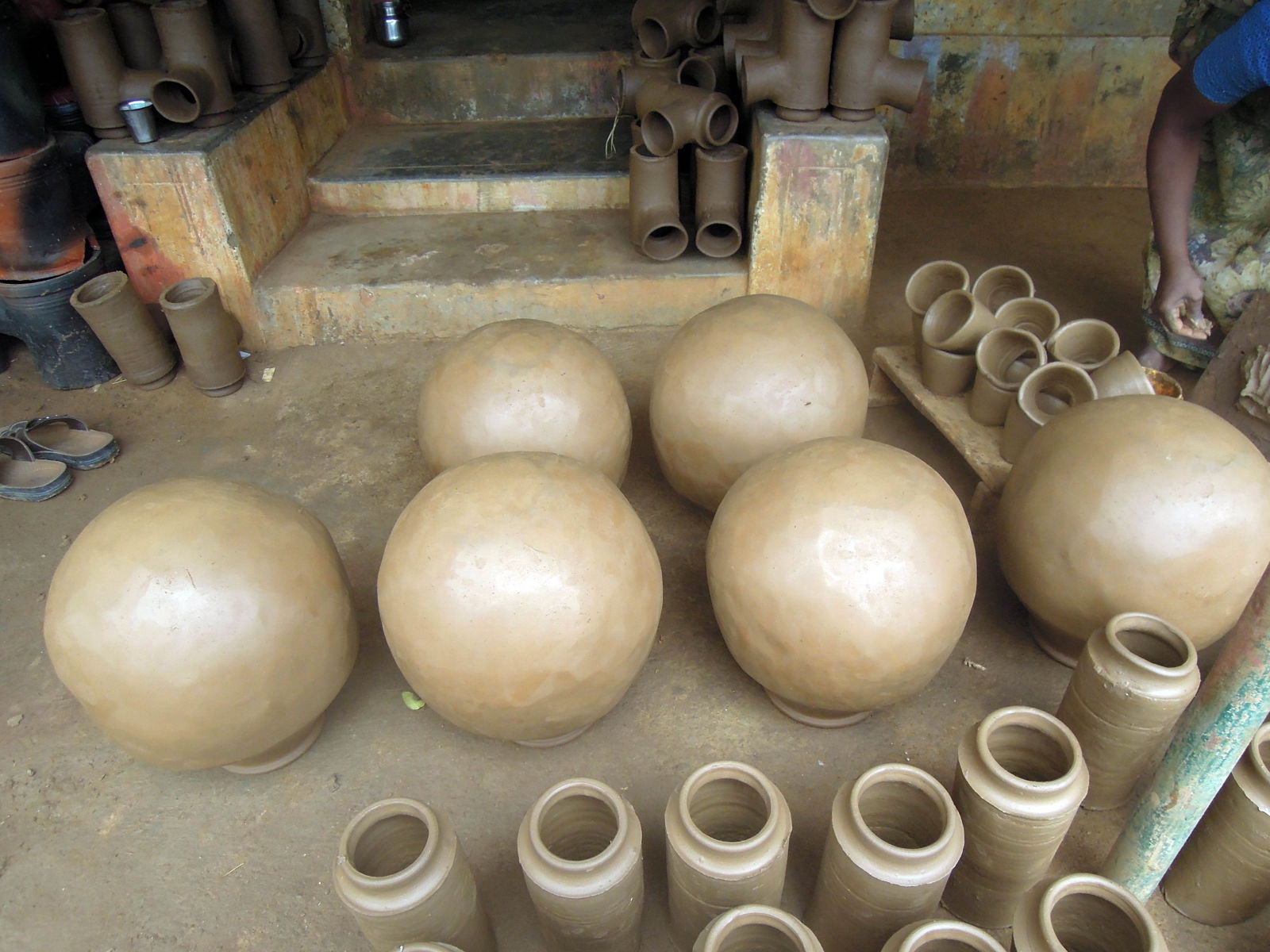
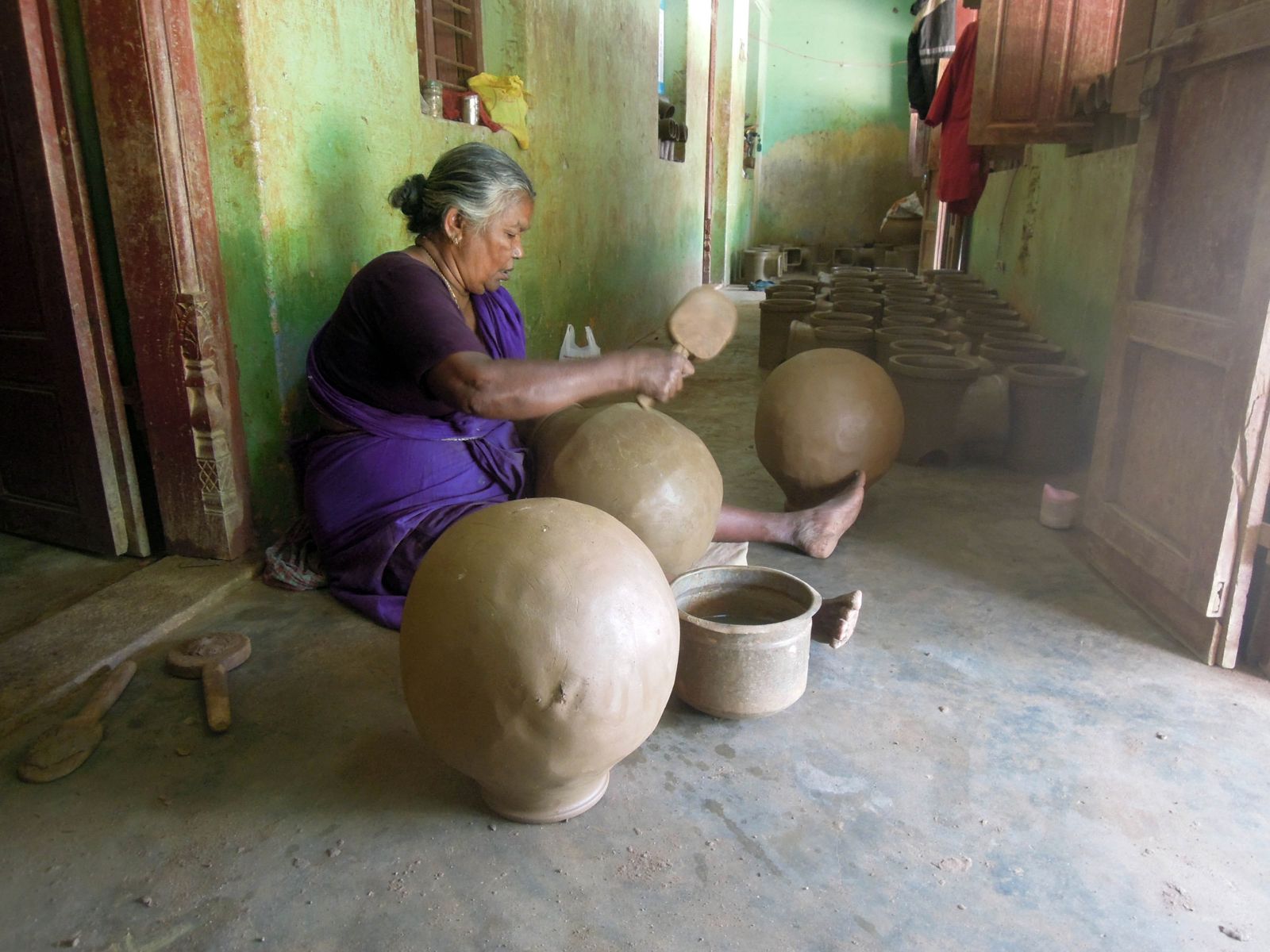
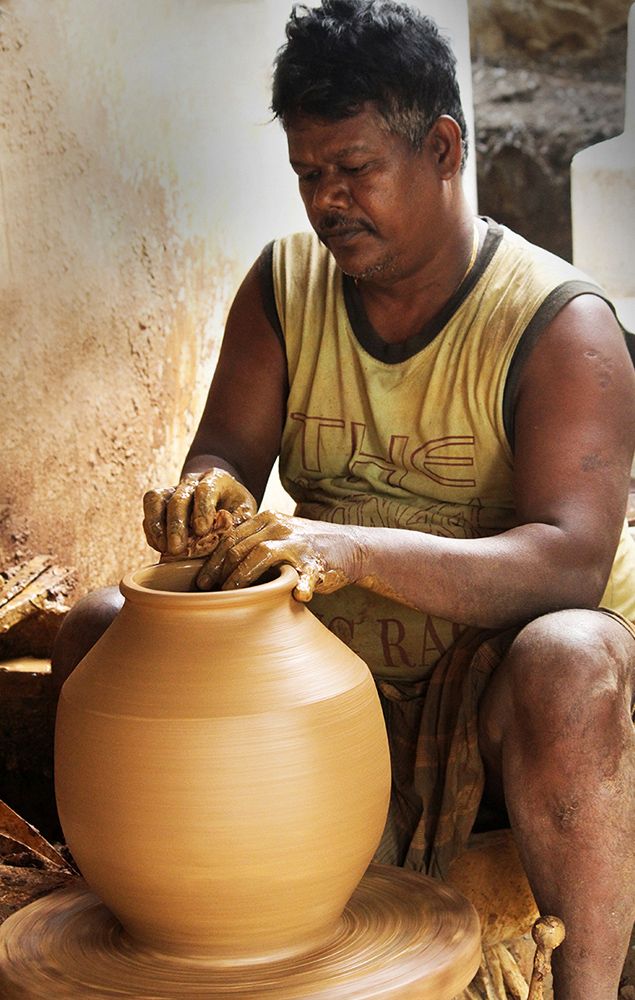
Special features of the Ghatam
In my mind, the most special feature of the Ghatam, that makes it stand out from almost all other percussion instruments, both Indian and foreign, is that it is very eco-friendly, using neither wood nor animal skin.
The Pancha Bhutas or the five essential elements - Earth (prithvi), Fire (agni), Water (jalam), Air (vayu) and Space (akash) - go into the making of the Ghatam. Earth is mixed with salt-free rain water and baked in fire with air being a part of drying, temperature control and other processes. And space or ether, the fifth element, contained within its pot like shape, is traditionally also associated with sound.
Another unique feature of the Ghatam is that it is single bodied. It has no additional appendages or fittings. The Ghatam has three portions – the mouth, a slanting portion from the mouth and the rounded lower half, all moulded seamlessly together. With a narrow mouth, the lower half differs according to different pitches or shruthi. The bigger ones are of lower pitch and vice versa. While playing the Ghatam we use all the 10 fingers. I can play one shollu (musical phrase) in many ways. I can make use of the entire surface of the Ghatam to produce different sounds in the same phrase.
Does it have a Shruti or pitch?
Yes! The Ghatam produces a distinctive metallic sound and is made in several sizes, each size having a different pitch. In a South Indian Carnatic Music concert, the Ghatam plays the role of an accompanying instrument and so the pitch I select would have to match that of the musician I am accompanying, be it a vocalist or an instrumentalist.
How does one tune the Ghatam?
The Ghatam can be re-tuned to some extent with plasticine or clay, which would reduce the pitch by a quarter/half note and alter the tonal quality. It can also be lowered by either wiping the instrument with a wet cloth or immersing a part of it in water for a while.
How is the Ghatam Played?
The Ghatam is played with one’s hands, wrists, fingers and nails. If I held out my hand to you, you would know what a Ghatam player’s hands look like. The force of beating on the Ghatam, have strengthened and shaped my fingers anew.
The Ghatam is placed on my lap, between my two bent legs, with the mouth facing me and played with a gush of air using the belly. I use my fingers, thumbs, palms, and heels of the hands to strike its outer surface to produce different sounds. Different tones can be produced by hitting areas of the pot with different parts of the hands.
The Ghatam can be moved to other positions while being played. Sometimes, I turn it so that the mouth faces the audience and I play on the neck of the instrument.
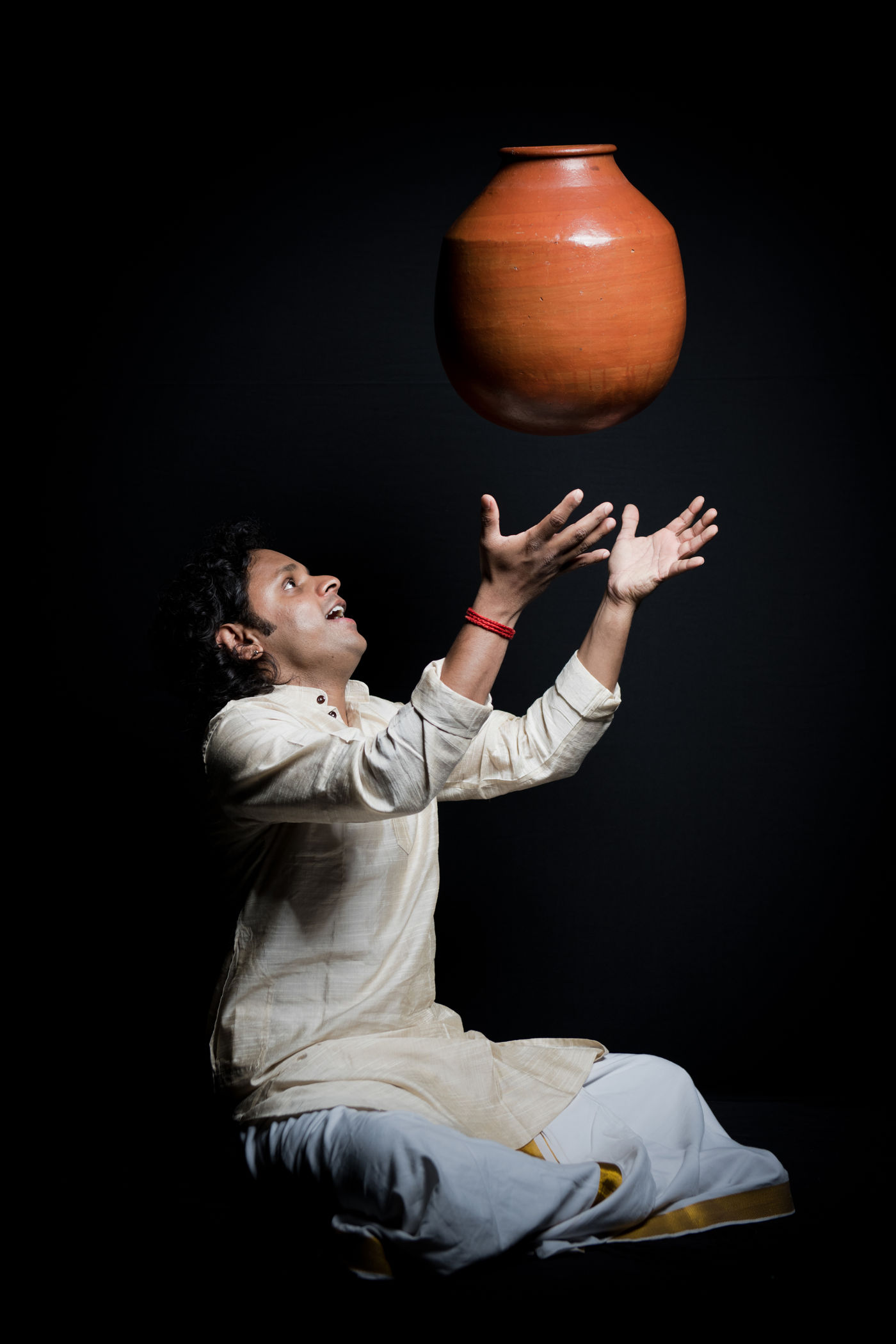
What is meant by the ‘Flying Ghatam’?
Throwing the Ghatam in the air and catching it can look very spectacular, and it never fails to create a buzz. However, that is not its only purpose.
In a South Indian Carnatic concert also called a kutcheri, the Ghatam provides rhythmic accompaniment along with other percussion instruments. In the Tani Avaratanam, the all percussion segment, the Ghatam player throws the Ghatam in the air while playing a rhythmic pattern called Mukthayam (also known as a Korvai) at the third turn of every phrase.
I have done this a few times myself. It’s not something that I set out to do in a concert, it just happens spontaneously. Rare as it is, when it is done, it shows that there is great synergy among the artistes on stage. It also means that I have hit my groove, literally.
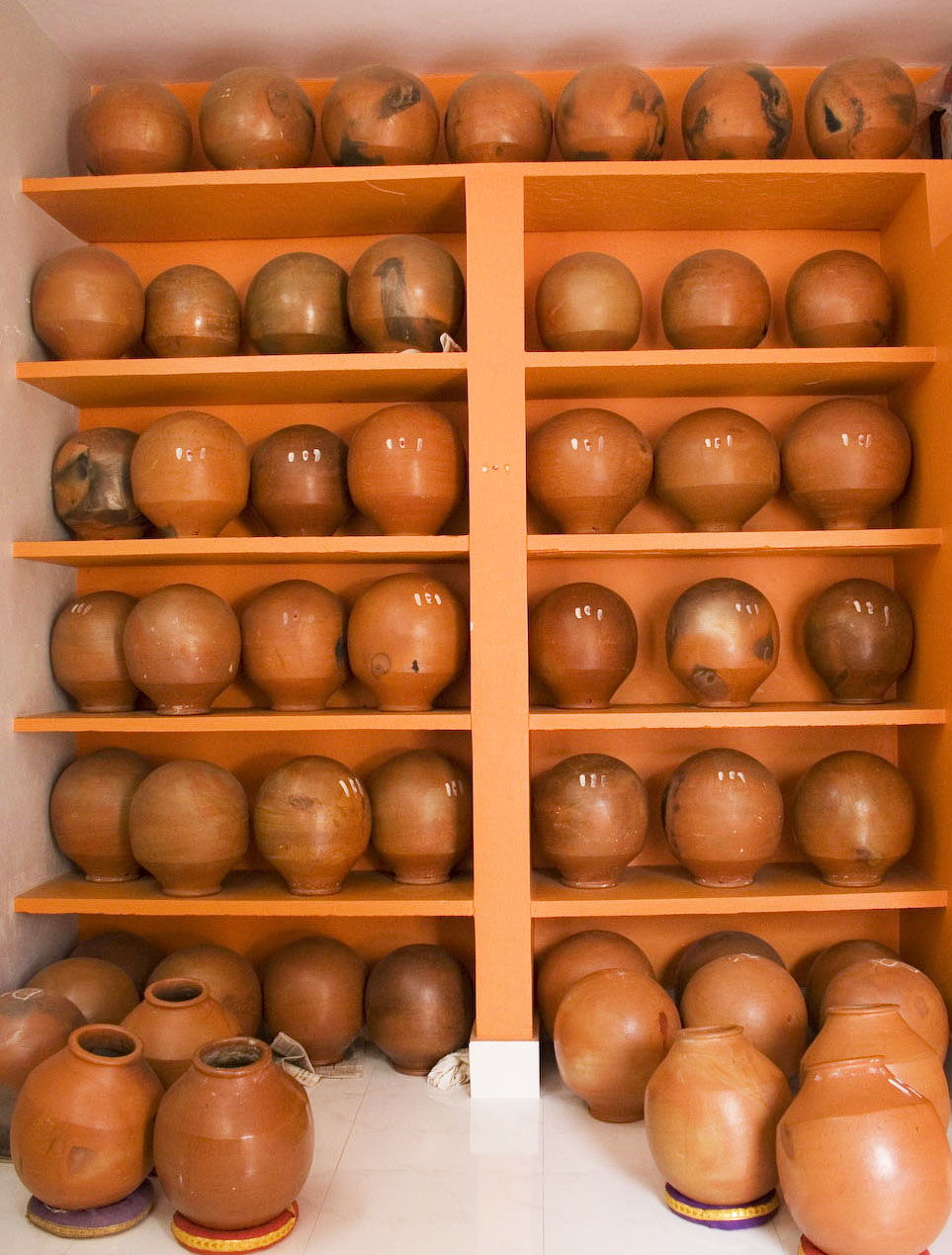
How to procure a Ghatam?
Ghatams used in Carnatic music are predominantly made in Devanahalli near Bengaluru and in Manamadurai, near Madurai in Tamil Nadu.
I have made the journey to Manamadurai several time to source my Ghatams. The soil contains some naturally occurring ingredients which produce a unique tone.
No two Ghatams are ever alike as they are handmade and there are variations. Typically they weigh between 5-8 kgs with a height of about 13 inches and the largest diameter is around 36 Inches.

How do I carry my Ghatam when I am travelling?
I remember in my early years carrying my Ghatams without any proper bag or casing. While the Ghatam may look fragile, it is actually quite hard and there have perhaps been only a couple of instances where it has cracked in all my years of playing. Of course nowadays we have Ghatam bags made of Rexene. The bags have extra paddings which help in shock absorption and also a tough exterior. We also have more sturdy casings for international travel.
Check this out : GIRIDHAR UDUPA A gifted young percussionist
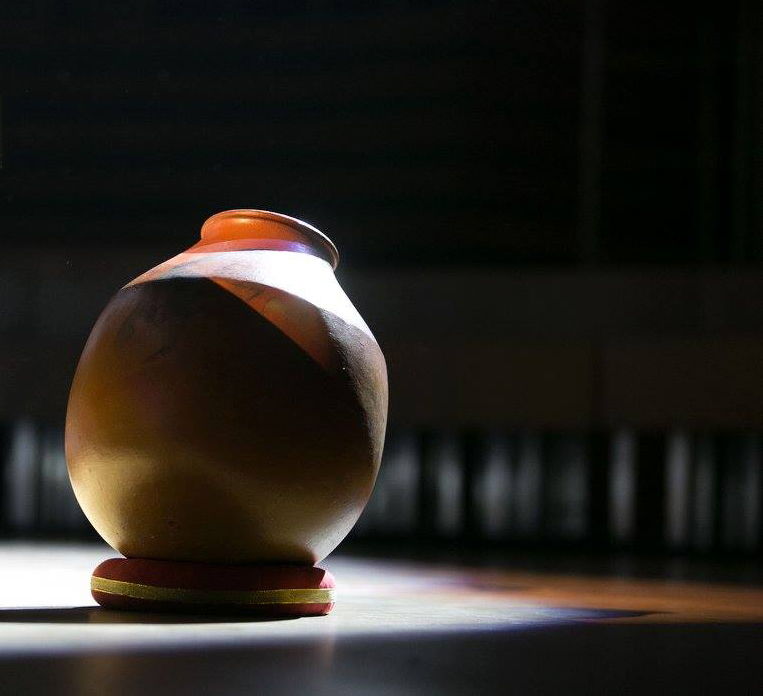
Which are the earliest references to the Ghatam?
You might ask me why one should know the history of the instrument, as long as one knows to play it or appreciate its sounds. It is something I have asked myself over the years as I have grown to deeply love and understand this instrument.
The answer is simple and was explained once by the greatest Ghatam player that this century has ever seen– Vikku Vinayakram who is fondly known as the “God of the Clay Pot”. He said one has to know where the Ghatam has come from and how it is made, in order to understand how it is played. I have grown to appreciate the value of this wisdom, just as I know that I have to apply more pressure or less depending on how the potter has made the Ghatam.
World over, the use and popularity of musical instruments has developed in tandem with the cultural and religious practices of the region in which they have originated. The Ghatam is no different, finding mention in the Ramayana. In ‘Krishna Ganam,’ another literary work, there is a description of a cowherd playing on a pot as an accompaniment to Lord Krishna’s Flute. The Ghatam has been used for centuries as part of percussion ensembles at temples and ritual festivals in South India.
In the folk tradition, it has a history of over 600 years and was called the ‘Mattae’, played with or without a skin membrane tied to its mouth. Sometimes, a string was attached to a support along the vertical axis and it was plucked or twanged softly to give a 'Ghumki' type of effect while playing.
In present times, the Ghatam is known by various names and has found its place in a variety of contexts. In Punjab it is known as gharha and is a part of Punjabi folk traditions. In Rajasthan it is known as the madga and pani mataqa (water pot).
Can the Ghatam be played in North Indian or in International music collaborations?
I have played the Ghatam in Hindustani music (similar to a tabla, as an accompanying instrument, and not as a jugalbandhi where two musicians present their music on an equal footing), with Flamenco, Jazz, Irish, and World Music in addition to playing in South Indian Carnatic concerts. All of which gives me an adrenaline rush. These collaborations are important to me as it proves the universality of Indian rhythm.
Konnakol
The art of Konnakol, where percussionists vocalize rhythmic syllables, has become the universal language of rhythm and musicians are taking to it with gusto for everything from learning rhythm to mastering and controlling complex rhythmic structures in playing their own instruments. It’s a tradition South Indian Rhythm Language.
Many percussion gurus teach Konnakkol along with percussion classes and all Ghatam players have to know Konnakol. It is also considered an independent art form which can be performed with the usual musical virtues of a good voice, laya, melody, and creative exploration.